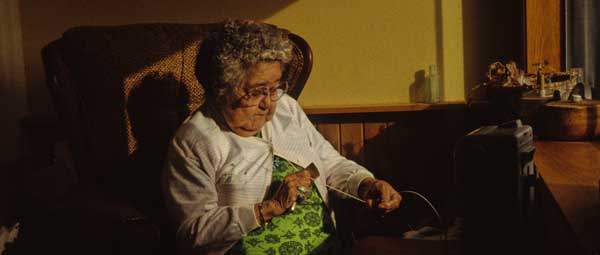 Madeline Shay
Madeline Shay
Penobscot Primer 2009
The Penobscot Primer is a documentary Native American linguistic program in the Penobscot Algonquian dialect created by Richard Garrett and Martha Young in collaboration with Penobscots Madeline Shay, Barry Dana and Carol Dana. The Penobscot Tribe is located in Central Maine at the Indian Island Reservation. There are few reference and teaching resources of this primarily spoken language for use by either the Penobscot Nation or the interested scholar.
The Penobscot Primer, a computerized audio-visual resource, features the voice of Madeline Shay, the last Native speaker of Penobscot, responding to visual prompts of people places and things. The photographs, audio recording and the Penobscot and English text files have been combined to create the Penobscot Primer. This was a last ditch effort to assist Madeline in the preservation of the language she loved. The sentences, with sometimes surprising verbiage, represent a Native American grandmother’s thoughts on life (including ethno-historic data.)
The Penobscot Primer field recording sessions occurred from 1991-1996. The Maine Humanities helped fund the early work. Former Chief of the Penobscot Tribe, Barry Dana and his cousin Carol Dana, both teachers of the language and mentors, attended slide shows and worked with Madeline on the written Penobscot transcription. The majority of the visual prompts were from 35 mm slides by Richard Garrett. These include photos from a portfolio of Maine’s Baxter State Park (a Penobscot Indian sacred zone) funded by Audubon Magazine. Other photographs were of tribal events and Native American subjects shot for the Penobscot Primer. A historic photograph of Madeline’s family, Barry Dana’s drawings, and Professor Emeritus Karl Teeter’s stick figures were also used as prompts.
Extracted from the hours and hours of tape are over 550 individual sentences relevant to the Native American existence. For over thirteen years the computerized Primer has been used in the Indian Island Reservation School and displayed at the University of Maine’s Hudson Museum where it was featured in an installation.
